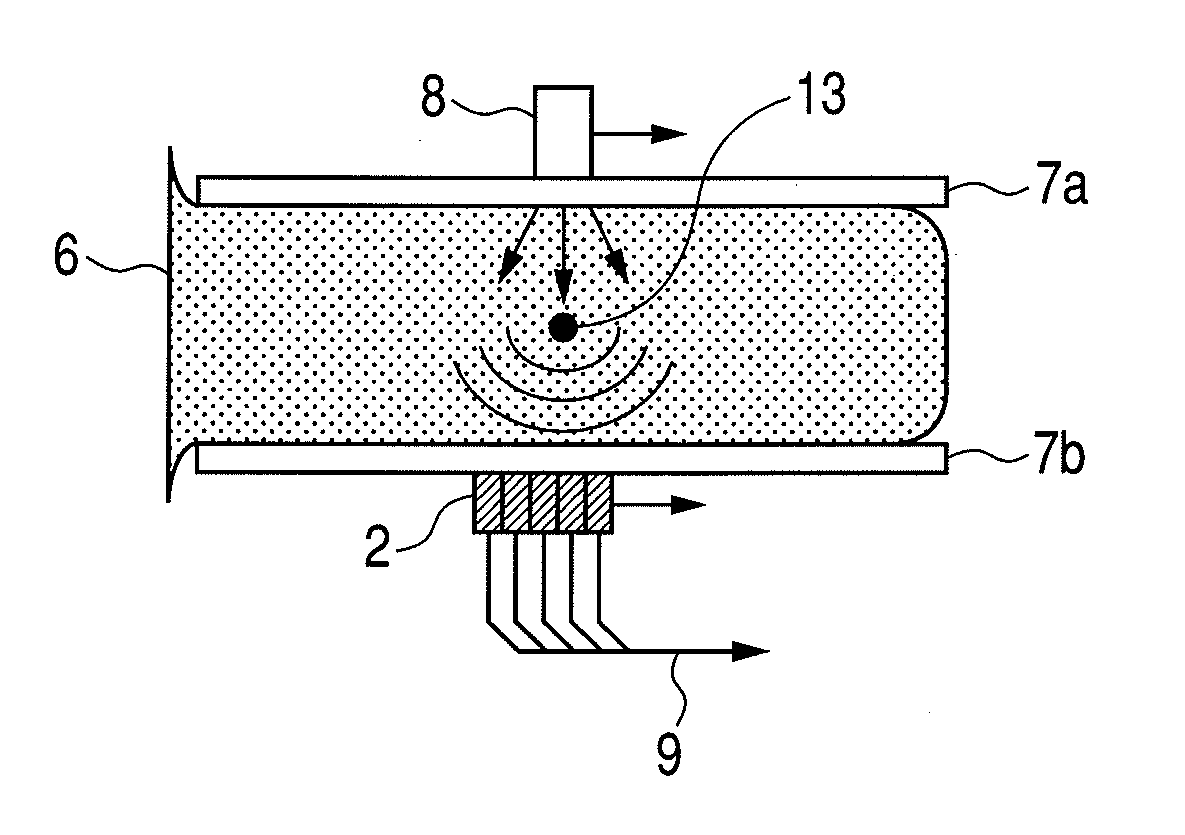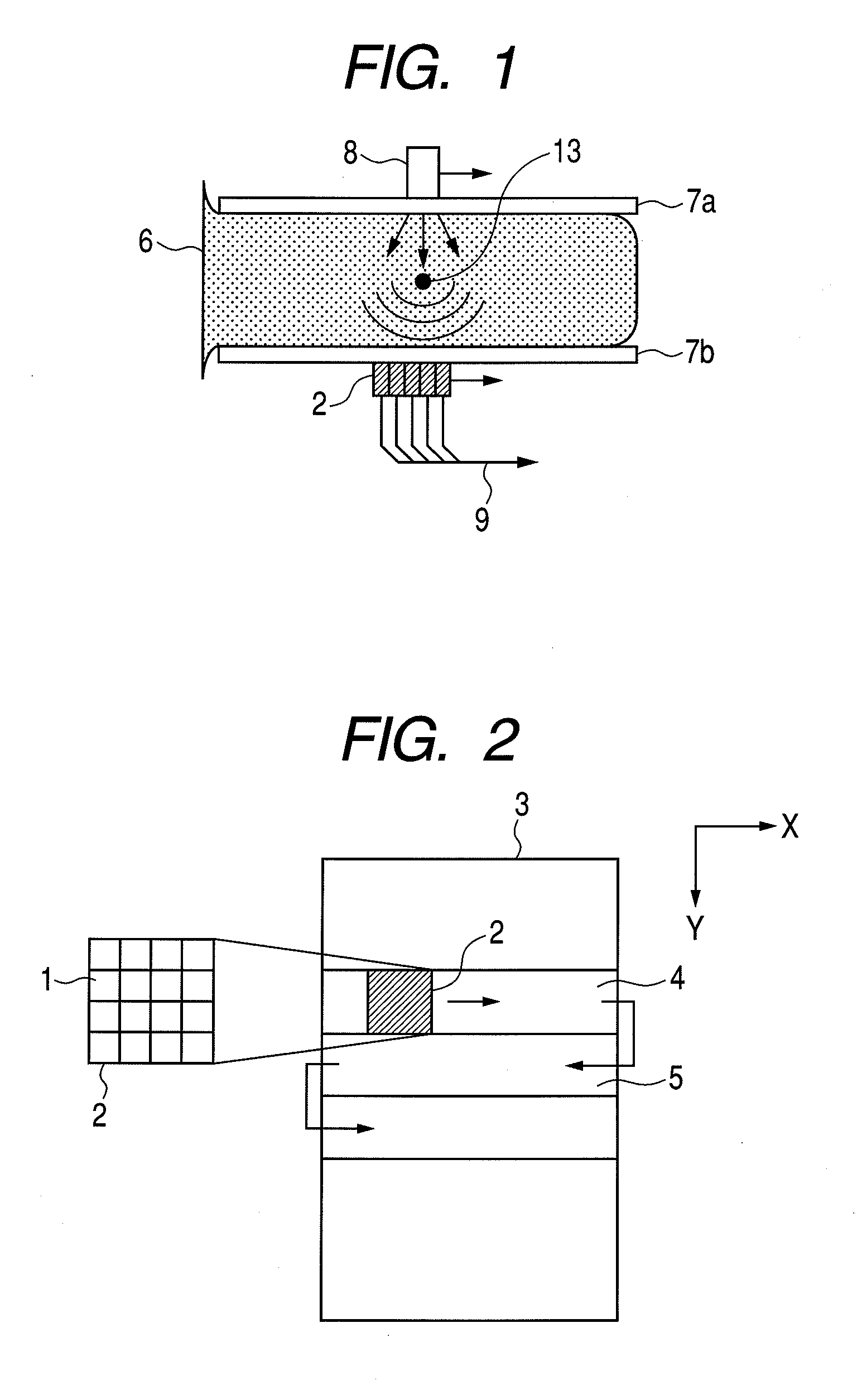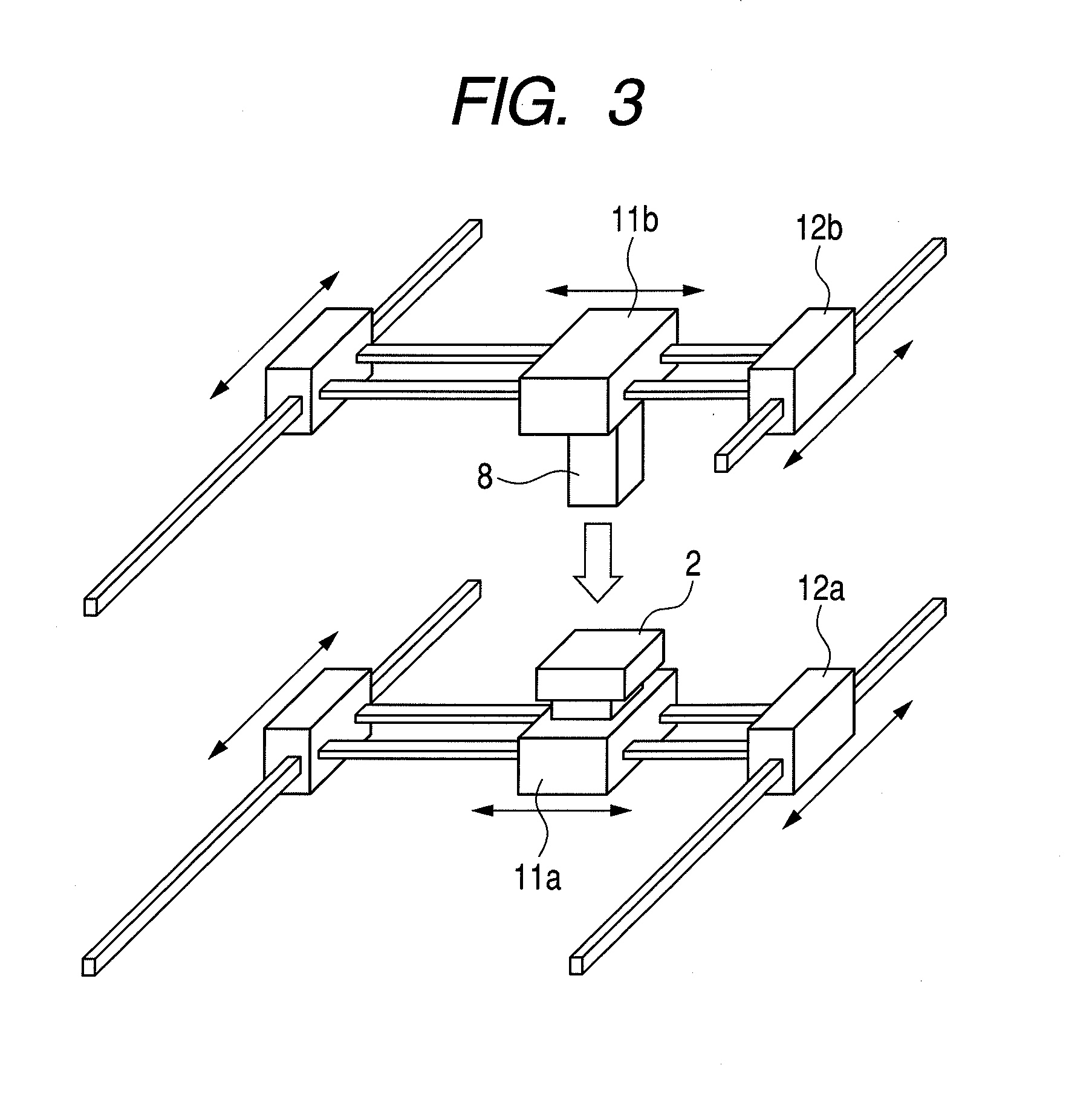Photoacoustic imaging apparatus
a photoacoustic imaging and apparatus technology, applied in the field of bioinformation acquisition apparatus, can solve the problems of difficulty in commercial viability in cost, uneven sensitivity between the central part and the end parts of the two-dimensionally arranged electromechanical conversion elements, and waste of tim
- Summary
- Abstract
- Description
- Claims
- Application Information
AI Technical Summary
Benefits of technology
Problems solved by technology
Method used
Image
Examples
first embodiment
[0036]In the following, a first embodiment of the present invention will be described. A bioinformation acquisition apparatus according to the present embodiment includes a light source, as an electromagnetic wave source for generating a pulsed laser; and an electromechanical conversion element group, which includes a plurality of arranged electromechanical conversion elements, each receiving an acoustical wave, as an elastic wave generated by radiating a pulsed laser from the light source to a test object in a test body, and converting the received acoustical wave into an electric signal. Furthermore, the bioinformation acquisition apparatus includes a moving device for moving the electromechanical conversion element group into the arrangement direction of the electromechanical conversion elements, an adding device for adding the electric signals transmitted from the plurality of electromechanical conversion elements to one another, and a processing device for obtaining image infor...
second embodiment
[0068]Next, a second embodiment of the present invention will be described. The second embodiment uses an electromechanical conversion element group different from that of the first embodiment. The other respects of the second embodiments are the same as those of the first embodiment.
[0069]As illustrated in FIG. 11, an electromechanical conversion element group 51 according to the present embodiment arranges six electromechanical conversion elements 52 in their moving directions with two gaps 53, each being a two-element width, put between the electromechanical conversion elements 52. FIG. 12 illustrates temporal transitions at the time of inputting an acoustic signal every movement of a six-element width by using the electromechanical conversion element group 51. As illustrated in FIG. 12, the inputting of the acoustic signals subjected to the addition of one time can be performed in successive positions in spite of using the electromechanical conversion element group 51 with the g...
third embodiment
[0073]Next, a third embodiment of the present invention will be described. The third embodiment implements the addition processing in the direction perpendicular to the moving direction of an electromechanical conversion element group besides the addition processing in the moving direction of the electromechanical conversion element group. The other respects are the same as those of the first and second embodiments.
[0074]If acoustic signal inputting is performed by using an electromechanical conversion element group arranging M electromechanical conversion elements in the moving direction and N electromechanical conversion elements in the direction perpendicular to the moving direction, then the number of signal waveforms corresponding to the stripe length of the width of the N electromechanical conversion elements have been input into the processor 21 at the time point when a time of movement has been completed. Next, if an adjacent stripe is set so that a part of the adjacent stri...
PUM
 Login to View More
Login to View More Abstract
Description
Claims
Application Information
 Login to View More
Login to View More - R&D
- Intellectual Property
- Life Sciences
- Materials
- Tech Scout
- Unparalleled Data Quality
- Higher Quality Content
- 60% Fewer Hallucinations
Browse by: Latest US Patents, China's latest patents, Technical Efficacy Thesaurus, Application Domain, Technology Topic, Popular Technical Reports.
© 2025 PatSnap. All rights reserved.Legal|Privacy policy|Modern Slavery Act Transparency Statement|Sitemap|About US| Contact US: help@patsnap.com



